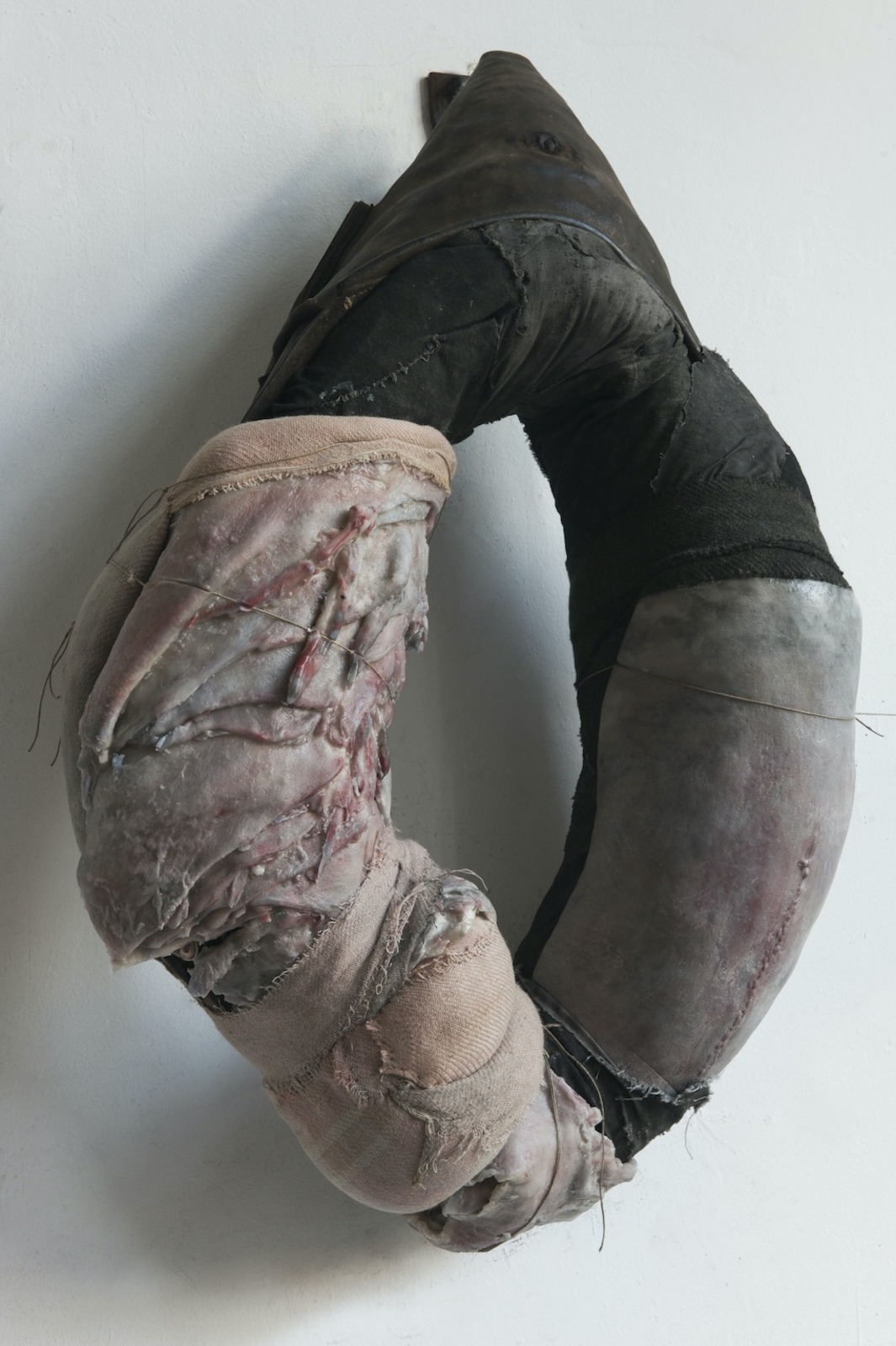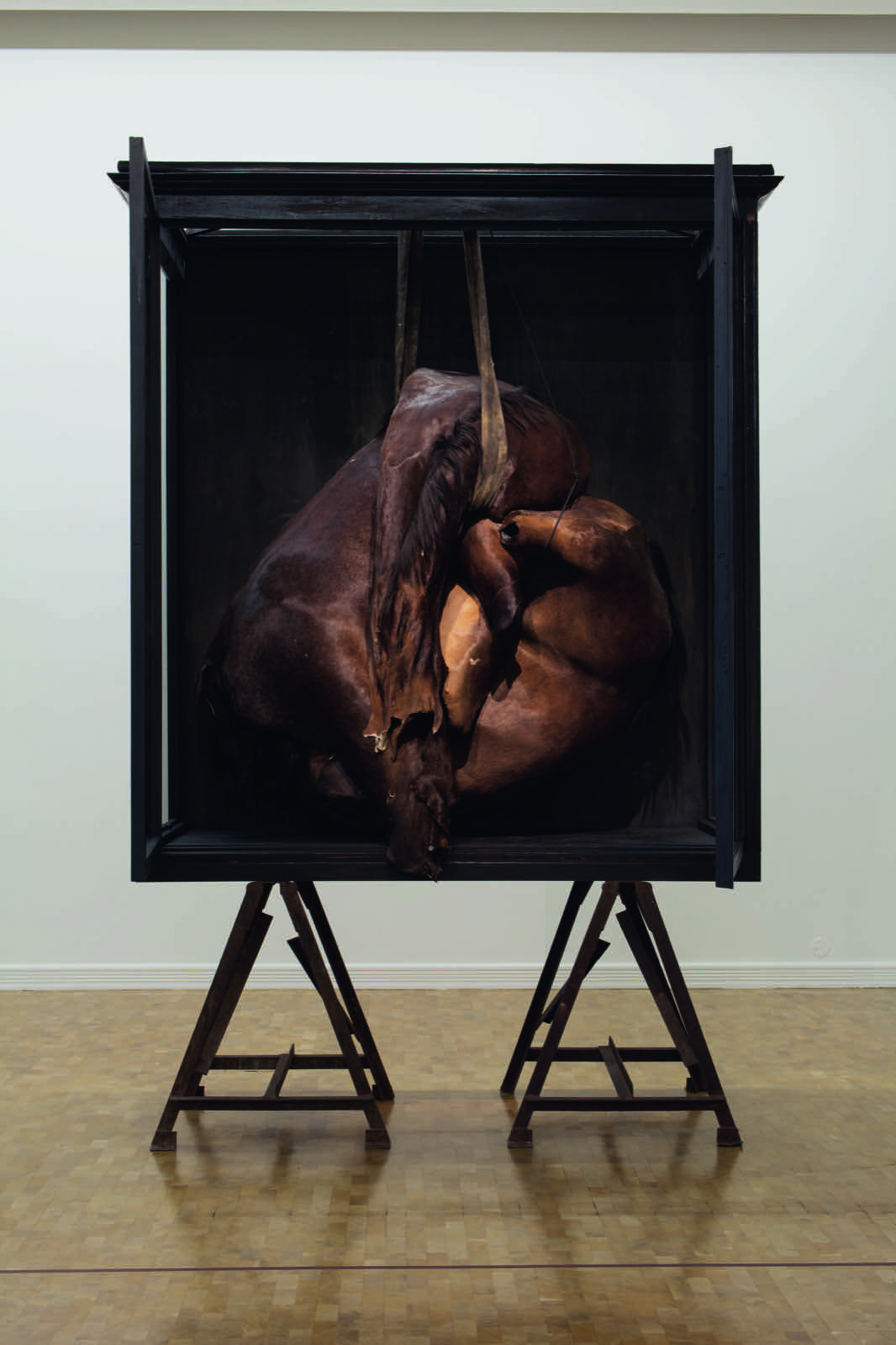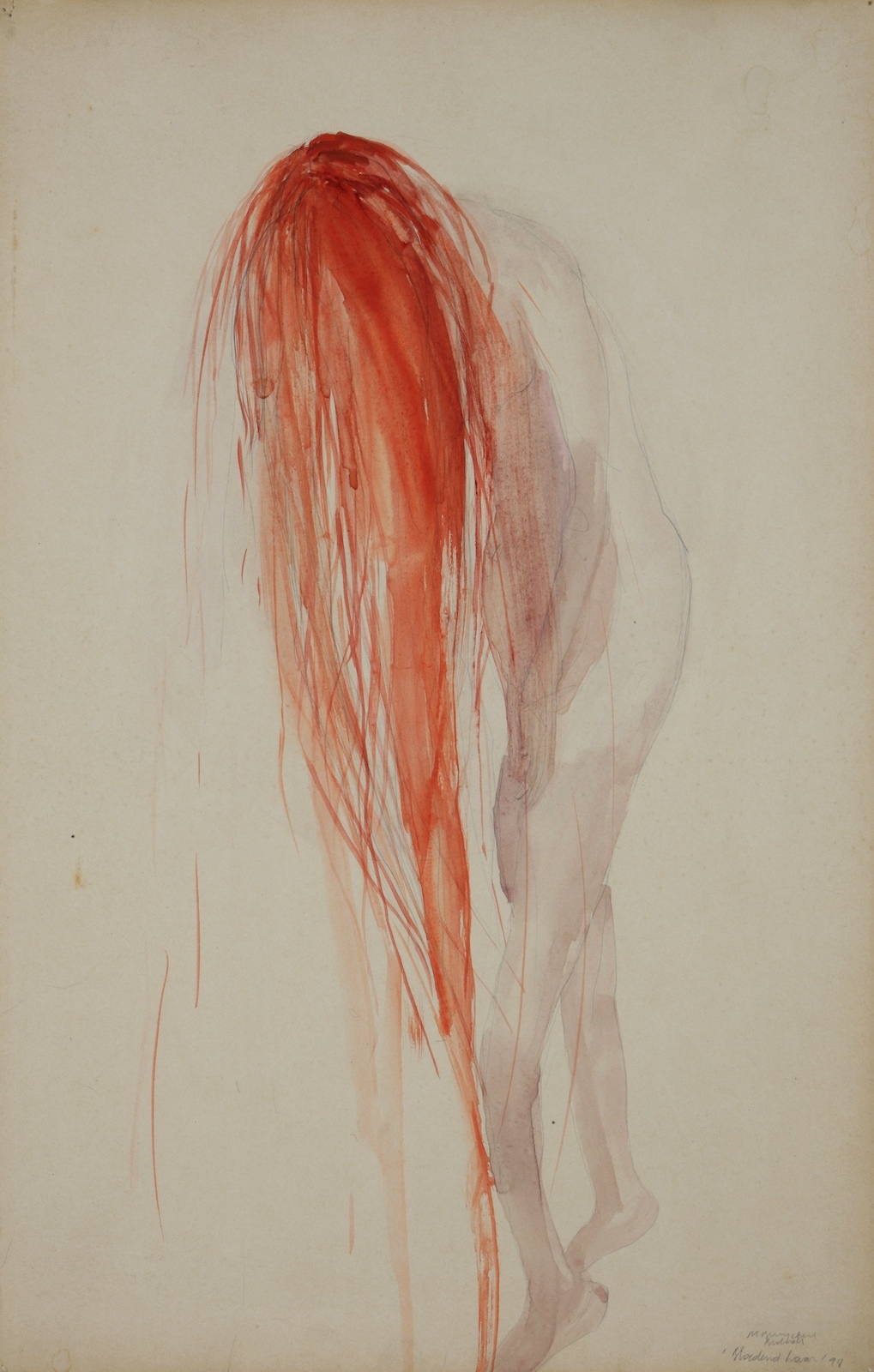2014
mixed media
h. 93 cm x b. 62 cm x d. 22 cm
2020 bruikleen Collectie Matthys-Colle
mixed media
h. 93 cm x b. 62 cm x d. 22 cm
2020 bruikleen Collectie Matthys-Colle
NL – Het lichaam is de beeldbron van De Bruyckeres oeuvre. Hoe het lichaam zichtbaar lijden kan, vormt het centrale thema. Vandaag zijn we voor lijden bijna immuun door de overvloed van gruwelijke beelden die de massamedia continu op ons afsturen. De Bruyckere maakt lijden als diepmenselijk, universeel en tijdloos fenomeen opnieuw voelbaar. Ze doet er ons naar kijken, bij stilstaan. De lichamen die De Bruyckere creëert lijken verstoten en gebroken. Ze hebben geen organen en meestal geen handen, hoofd, ogen of geslacht maar in plaats ervan vaak een gapende leegte. De lichamen zijn anoniem, onstabiel en disfunctioneel. Ze degenereren, verkeren in staat van ontbinding. Hoewel ze vaak een in zichzelf gekeerde houding hebben, is hun aanwezigheid zeer krachtig. Krommen ze zich om zich aan dwang van buiten uit te ontworstelen? Plooien ze zich op zichzelf terug uit angst of schaamte? Bundelen ze hun laatste restje energie? Of wenden ze zich van de wrede, bedreigende wereld af om helemaal in hun binnenste te verdwijnen? Binnen haar universum laat ze ons lichamen en organismen zien die te extreem zijn verminkt, te concreet en te gedetailleerd om reëel te kunnen zijn.
ENG – The body is the visual source of De Bruyckere’s oeuvre. The main theme is the way the body can visibly suffer. These days we have become almost immune to suffering as a result of the profusion of horrific images the mass media constantly shower us with. De Bruyckere makes suffering palpable once again, as something deeply human, universal and timeless. She makes us look at it and reflect on it. The bodies De Bruyckere creates appear cast out and broken. They have no organs and in most cases no hands, head, eyes or genitals, but in their place they often have a gaping void. These bodies are anonymous, unstable and dysfunctional. They are in a state of degeneration and decomposition. Although their posture is often inward-looking, they have a very powerful presence. Are they bent like this so as to wrest themselves from an external force? Are they turned in on themselves out of fear or for shame? Are they gathering up the last remnants of their energy? Or are they turning away from the cruel, menacing world so as to vanish completely into their innermost self? In her universe, isolated from our time and space, she shows us bodies and organisms that are mutilated too extremely, and are too concrete and detailed to be real.
FR – Le corps est la source d’image de l’œuvre de De Bruyckere. Le thème central est la souffrance visible du corps. Aujourd’hui, nous sommes presque immunisés contre la souffrance par l’abondance d’images horribles que nous envoient constamment les médias. De Bruyckere rend la souffrance à nouveau tactile comme un phénomène profondément humain, universel et intemporel. Elle nous force à la regarder, à y réfléchir. Les corps créés par De Bruyckere semblent rejetés et cassés. Ils n’ont pas d’organes et souvent pas de mains, de tête, d’yeux ou de sexe, mais au lieu de cela souvent un vide béant. Les corps sont anonymes, instables et dysfonctionnels. Ils dégénèrent, sont en état de décomposition. Bien qu’ils aient souvent une position repliée sur eux-mêmes, leur présence est très puissante. Se replient-ils pour s’arracher à la contrainte de l’extérieur? Sont-ils recroquevillés sur eux-mêmes par peur ou par honte? Rassemblent-ils leur dernier reste d’énergie? Ou se détournent-ils du monde cruel et menaçant pour disparaître complètement dans leur for intérieur? À l’intérieur de son univers, séparé de notre temps et notre espace, presque gelé, elle nous montre des corps et des organismes qui sont mutilés de manière trop extrême, trop concrets et trop détaillés pour pouvoir être réels.
Collectienummer : 7524




















